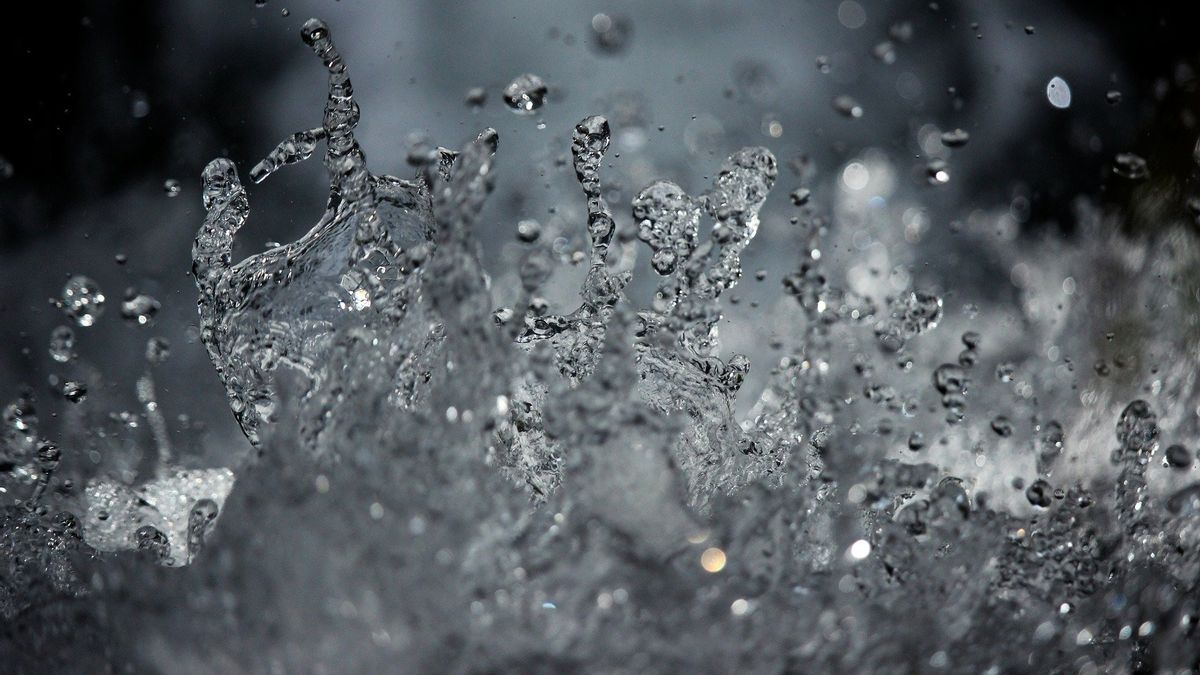JAKARTA - Today 22 March is the commemoration of World Water Day, which in its history was first announced at the 47th General Assembly of the United Nations on December 22, 1992 in Rio de Janeiro, Brazil.
This water day commemoration began in 1993 to motivate the public to support water conservation by reducing the use of tap water throughout the day. Every year World Water Day carries special themes, as a model in 2009 with the theme "Shared water, shared opportunities" or "Common Water, Collective Opportunity."
And in 2021 this is "Valuing Water". Valuing Water itself discusses what water means to humans and how we can better protect this important resource.
Basically, water has an important role in our life. So, it needs to be maintained so that water always flows clean based on 3 important elements.
Actually, there are 3 important elements that become a reference for determining how clean water is. And the 3 references are Physical, Chemical, and also microbiology.
Clean Water Requirements Based on Physical
Physically, healthy drinking water must be clear (colorless) and flavorless. Quoting Buckle KA, in the book Food Science (1987), drinking water must not contain suspended or cloudy materials. In addition, quality bottled water should also be below the temperature of the air outside (at room temperature).
The water must be clean and not cloudy
The criteria for clean water can be observed with the naked eye, namely clear and not cloudy. Clear means that the water is not contaminated with turbid and other substances that are harmful to the body. Turbid water can occur because of a mixture of insoluble particles such as dust and soil so that the germs in it cause the water to become cloudy.
Not any color
The next criterion is colorless water, meaning that no color is mixed in the water. Color mixed in water can be suspected as a dangerous factor that can interfere with health. Factory waste that is immediately disposed of into the river without being specially processed, or residents who often throw garbage and animal carcasses into the river carelessly are some of the cases that can change the color of the water.
It doesn't taste anything
Clean water that is fit for regular consumption does not taste or taste tasteless without the addition of a bitter, salty, or bitter taste. If you find water that tastes bitter or salty, it's best to treat the water first before using it.
It doesn't smell like anything
Clean water should not smell especially bad when you smell it. Especially if the water is in an area that has an unpleasant or sour smell, of course the water cannot be said to be clean water. If you use scented water, there are many disadvantages.
Normal Temperature
The clean water temperature shouldn't be too hot or too cold. The normal temperature of clean water is around 10 to 25 degrees Celsius or it can be said that it is cool. Water with a temperature that is too high or hot can cause the oxygen that is too in the water to decrease in quantity and the rate of chemical response to increase.
Does not leave sediment
Clean and healthy water generally contains some substances that are good for health. However, the content of substances in insufficient or excessive amounts can actually cause physiological disturbances in humans. Such as copper which is useful for arranging red blood cells in the body. However, if consumed in excess amounts, it can cause damage to the liver.
Chemical Based Clean Water Requirements
Chemical requirements. Healthy drinking water should also meet the necessary chemical requirements. This means that water should contain certain necessary substances, such as iron, manganese and chloride.
The substance should also be present in a certain amount. Lack or excess of certain substances in water will cause imbalances. Unfortunately this will also disrupt a person's physiological state. The conditions include;
1. Does not contain chemicals that contain toxins
2. Does not contain excessive chemical substances
3. Enough iodine
4. The pH of the water is between 6.5 - 9.2
Requirements for Clean Water Based on Microbiology
Microbiology requirements. These microbiological requirements are also known as bacteriological requirements. Because it is applied as a drink, drinking water should be free from all kinds of germs that contaminate it. "In particular, it must be free from pathogenic (disease-causing) germs," said Ika. To identify the presence or absence of pathogens in bottled drinking water, drinking water should be tested in the lab.
In the provision of clean water that is suitable for consumption by the community, many cite the Minister of Health Regulation No. 173 / Men.Kes / Per / VII / 1977, water supply must meet quantity and quality, such as:
- Safe and hygienic.
- Good and worthy of drinking.
- Available in sufficient quantities.
- The price is relatively cheap or affordable for most people
Existing parameters are applied to the system in the treatment, operation and tariff processes. Water parameters that are important as physical, chemical, biological and radiological parameters are | as follows:
Physical Water Parameters
1. Turbidity
2. Color
3. Taste & smell
4. Deposits
5. Temperature
Chemical Parameters of Clean Water
1. Organic, among others: carbohydrates, oils / fats / fats, pesticides, phenols, proteins, detergents, etc.
2. Inorganic, including: hardness, chloride, heavy metals, nitrogen, pH, phosphorus, sulfur, toxic materials.
3. Gases, including: hydrogen sulfide, methane, oxygen.
Biological Water Parameters
1. Bacteria
2. Animals
3. Plants
4. Protists
5. Viruses
Radiological Water Parameters
1. Conductivity or conductivity
2. Pesistivitas
3. PTT or TDS (The ability of clean water to conduct electricity)
How to make water safe for consumption?
Clean water does not mean the water is suitable for drinking or consumption. Before consuming water, you should process it first. This water treatment aims to kill microorganisms or bacteria in the water.
There are several systems that can be applied to treat water until it becomes suitable for consumption, the following is the explanation:
Processing by boiling
Processing by boiling water is usually not used for small consumption such as daily household needs. You can boil the water that has been collected in a container until it boils or exceeds 100 degrees Celsius. The purpose of boiling water to a boil is to kill germs in the water.
Processing by filtering
This filtering process aims to make the water clearer and less cloudy. In addition, filtering can also eliminate small impurities in the water. You can make a simple filter yourself using sand, gravel and palm fiber.
SODIS (Solar Water Disinfection)
SODIS is a water treatment method that is dried in the sun. Raw water is put in a bottled mineral water, then dried for several hours before consumption. Sunlight will inactivate the organisms that cause diarrhea in the water.
This system is one of the inexpensive water treatment methods and is recommended when experiencing an emergency to solve the problem of drinking water availability, especially during natural disasters.
In addition to the requirements for clean water based on three important elements, follow other domestic and foreign news only at VOI, it's time to revolutionize reporting!
The English, Chinese, Japanese, Arabic, and French versions are automatically generated by the AI. So there may still be inaccuracies in translating, please always see Indonesian as our main language. (system supported by DigitalSiber.id)













